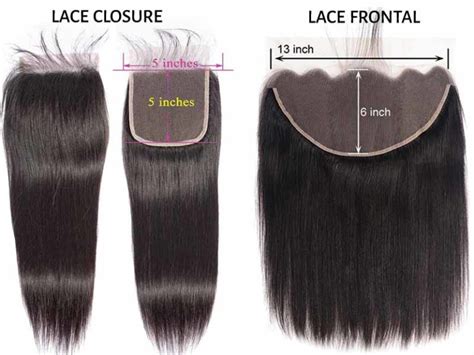When it comes to hair restoration, there are two main surgical techniques to consider: closure and frontal. Both methods have their pros and cons, and the best option for you will depend on your individual needs and goals.

Closure Surgery
Closure surgery is a surgical technique that involves removing a strip of hair-bearing scalp from the back of the head and transplanting it to the balding area. The transplanted hair is then sewn into place and allowed to heal, and the resulting scar is hidden by the surrounding hair.
Benefits of Closure Surgery:
* Natural-looking results
* Can be used to treat large areas of hair loss
* Long-lasting results
Drawbacks of Closure Surgery:
* Linear scar at the back of the head
* Can be painful and require a long recovery time
Frontal Surgery
Frontal surgery is a surgical technique that involves removing a strip of hair-bearing scalp from the front of the head and transplanting it to the balding area. The transplanted hair is then sewn into place and allowed to heal, and the resulting scar is hidden by the remaining hair.
Benefits of Frontal Surgery:
* Less noticeable scarring
* Can be used to treat smaller areas of hair loss
* Faster recovery time than closure surgery
Drawbacks of Frontal Surgery:
* Not as natural-looking as closure surgery
* Can only be used to treat small areas of hair loss
* May require multiple surgeries
Which Surgery is Right for You?
The best way to determine which surgical technique is right for you is to consult with a qualified hair restoration surgeon. They will be able to assess your individual needs and goals and recommend the best course of treatment.
Common Mistakes to Avoid
When considering hair restoration surgery, it is important to avoid the following common mistakes:
- Choosing a surgeon who is not qualified or experienced. This could lead to poor results or even complications.
- Not following the surgeon’s instructions before and after surgery. This could increase the risk of infection or other complications.
- Expecting too much from surgery. Hair restoration surgery can restore hair growth, but it will not make your hair look exactly like it did before you lost your hair.
- Giving up on your hair restoration goals too quickly. It takes time for transplanted hair to grow and mature, so be patient and don’t give up if you don’t see results immediately.
How to Prepare for Surgery
Before undergoing hair restoration surgery, you will need to:
- Get a medical evaluation. This will help to ensure that you are healthy enough to undergo surgery.
- Stop taking certain medications. Some medications, such as aspirin and ibuprofen, can increase your risk of bleeding during surgery.
- Avoid alcohol and smoking. Alcohol and smoking can also increase your risk of bleeding and other complications.
- Arrange for transportation. You will need someone to drive you home after surgery and stay with you for the first few days.
What to Expect During Surgery
Hair restoration surgery is typically performed under local anesthesia. This means that you will be awake during the procedure, but you will not feel any pain.
During surgery, the surgeon will remove a strip of hair-bearing scalp from the donor area and transplant it to the balding area. The transplanted hair will be sewn into place and the resulting scar will be hidden by the surrounding hair.
Recovery After Surgery
After surgery, you will need to take care of the transplanted hair and follow the surgeon’s instructions carefully. This will help to promote healing and minimize the risk of complications.
During the recovery period, you can expect to experience some swelling, bruising, and discomfort. You may also need to take pain medication and antibiotics.
Most people are able to return to work within a few days after surgery, but it may take several weeks for the swelling and bruising to subside completely.
Results of Surgery
The results of hair restoration surgery can vary depending on the individual patient. However, most people are able to achieve significant hair growth and improve their appearance.
Transplanted hair will typically begin to grow within a few months after surgery. The hair will continue to grow and mature over the next few years, and the final results can be seen after about 12 to 18 months.
Cost of Surgery
The cost of hair restoration surgery can vary depending on the surgeon, the technique used, and the size of the area being treated. However, most people can expect to pay between $5,000 and $15,000 for surgery.
Conclusion
Hair restoration surgery can be a life-changing procedure for people who are struggling with hair loss. However, it is important to choose a qualified surgeon and follow the surgeon’s instructions carefully to achieve the best results.
